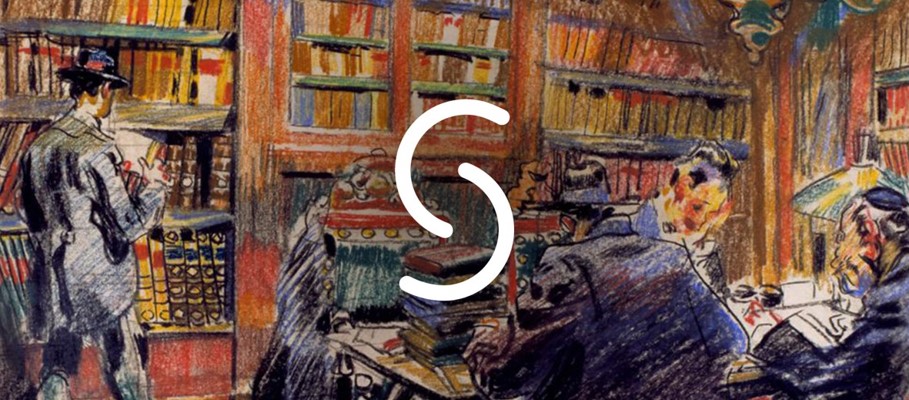-
Country
-
PT
-
Name of institution (English)
-
Municipal Library of Porto
-
Language of name of institution
-
por
-
Contact information: postal address
-
Rua de D. João IV 17, 4049-017 Porto
-
Contact information: phone number
-
00351 225193480
-
Contact information: email
-
bmp@cm-porto.pt
-
Reference number
-
INC.
-
Type of reference number
-
Archival reference number
-
Title (English)
-
Incunabula
-
Title (official language of the state)
-
Incunábulos
-
Language of title
-
por
-
Creator / accumulator
-
Biblioteca Pública Municipal do Porto
-
Date(s)
-
1470/1500
-
Language(s)
-
heb
-
lat
-
por
-
Extent
-
c. 250 books
-
Type of material
-
Textual Material
-
Physical condition
-
Good
-
Scope and content
-
This collection contains books printed before 1500. Among them, there is a Hebrew incunabulum printed in Lisbon: Abudarham (David Abudarham), Perush ha-berakhot ve-ha-tefillot (INC 88). This Seder Tefillot (order of daily prayers) was originally written in Seville and clandestinely printed in the printing house of Elieser Toledano, the only Jewish printer in Lisbon in the 15th century. The year of printing is not consensual: some date the book from 1489 (Amzalak, 1922; Azevedo, 1953), others from 1495 (Carvalho, 1904). It is a 199-folio volume printed in two columns with Sephardic characters. The Biblioteca Pública do Porto acquired it in 1869 for 30 pounds.
-
Archival history
-
This collection gathers books that belonged to the original collection of the Biblioteca Pública do Porto (see Administrative/Biographical History) and acquisitions made over the years, such as the above-mentioned Sefer Tefillot, purchased in 1869. It is the third biggest collection of incunabula in Portugal, only surpassed by the Biblioteca Nacional de Portugal and Biblioteca Pública de Évora’s collections.
-
Administrative / Biographical history
-
The Real Biblioteca Pública da Cidade do Porto (Royal Public Library of the City of Porto) was founded in 1833. It was headquartered in the Hospício de Santo António de Vale da Piedade (1834-1831) and in the Paço Episcopal (1836-1841) before moving to the former Convento de Santo António da Cidade in 1841, which had been donated to the municipality of Porto two years before.
After the Liberal Wars and the dissolution of the male religious orders in 1834, the Real Biblioteca received libraries belonging to monasteries, such as the Convento de Santa Cruz de Coimbra. In addition, it also incorporated private collections of some individuals connected to the conservative absolutist faction (the “Miguelistas”), such as bishop D. João de Magalhães e Avelar.
The decree that founded the Real Biblioteca also stipulated that it should receive every book printed in Portugal from then on, a privilege shared with the Biblioteca Nacional de Lisboa (National Library of Lisbon).
Diogo de Góis Lara de Andrade and Alexandre Herculano were the first librarians of the Real Biblioteca Pública do Porto and were responsible for the first organisation and cataloguing of its collections. After the 1840s, internal and external stability provided conditions for the development of the library under the directions of Antero Albano da Silveiro Pinto (1844-1885) and Eduardo Allen (1885-1899). The building was extended after the demolition of the church of the former convent of Santo António, the management of the bibliographic and documental fonds was improved, and the library’s collection increased with new acquisitions and donations.
During the 19th century, the Real Biblioteca do Porto was organised in 4 sections: the “Gabinete de Manuscritos” (Department of Manuscripts), the “Oficina de Encadernações” (Bookbinding Workshop), the secretariat and the “Serviço de Leitura Nocturna” (Service of Night Reading), created in 1884 to give the working class access to the library. The Department of Manuscripts had the goal of cataloguing the 1,200 manuscript volumes that were part of the library’s collection. The library’s direction also endeavoured to print catalogues of its collections. From 1879 to 1896, the catalogue of printed books was published in fascicles. Afterwards, from 1897 onwards, the manuscripts’ catalogue was published. It was followed by the publication of catalogues organised by specialised fields and catalogues of periodicals and incunabula. At the beginning of the 20th century, there was a renewed effort to transcribe and publish some manuscripts from the library’s collection. The “Collecção de Manuscritos Inéditos” (Collection of Unpublished Manuscripts) was an endeavour of the amanuensis José Maria Augusto da Costa and the librarian Sampaio Bruno, and it was published until 1923.
After the implementation of the Portuguese Republic, the library changed its designation to Biblioteca Pública do Porto, and it was awarded a statute of autonomy. The Law of Separation of State and Church (1911) led to the incorporation of the registry of the Cabido do Porto (later, in 1933, transferred to the Arquivo Distrital do Porto) and other collections from ecclesiastical institutions. The ever-growing volume of the library’s collection forced a new reorganisation of its services and structures in the 1920s. Among several changes, a section of manuscripts and restricted books was created. In 1947, the library’s organic units were restructured again. At present, the manuscripts, rare printed books, maps, iconography, and other special collections can be consulted in the “Sala de Colecções Especiais Eugénio de Andrade” (Special Collections Room Eugénio de Andrade) on the first floor of the building.
-
System of arrangement
-
Records are arranged sequentially.
-
Access, restrictions
-
The access to the documents in poor condition of conservation could be limited for safeguarding and preserving the institution's documentary heritage.
-
Existence and location of copies
-
Another copy of Abudarham’s Sefer Tefillot is in the incunabula collection of the Universitäts Bibliothek Frankfurt am Main (Inc. hebr. 61).
-
Author of the description
-
Carla Vieira, 2021
